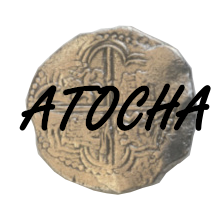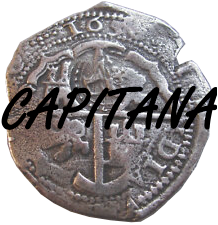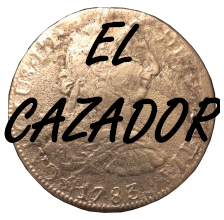Shipwreck History
Exploring the New World, Spain soon discovered huge deposits of gold and silver. Probably the largest deposit of silver in the New World was found in South America at a place the Spanish named Potosi (then, Bolivia, today, in modern day Peru). To export the precious metal to Spain quickly, the colonial mints in Lima, Mexico City, and Potosi produced irregular coinage called cobs. A bar of silver was cut into bite-sized chunks, referred to as planchets, of the appropriate weight. The planchets were then struck with a hammer between crude dies and therefore no two coins were exactly the same. The size, shape, and impression of these cobs is highly irregular, but they were the proper weight and the person in position of "Assayer" ensured the silver content was constant.
The most important feature of any cob coin is the date. If your cob has an intact date, it is worth much more than a cob where the date was never imprinted on the piece of silver. Another important feature is the Assayer's mark. The Assayer's mark can help to determine the time period which the coin was produced. In addition, the Assayer's mark has significance regarding the rarity of the coin; since some Assayers had a longer tenure and the opportunity to produce more coins. A coin with a clear date and Assayers mark creates the largest demand and therefore increases the value of the coin.
The most important feature of any cob coin is the date. If your cob has an intact date, it is worth much more than a cob where the date was never imprinted on the piece of silver. Another important feature is the Assayer's mark. The Assayer's mark can help to determine the time period which the coin was produced. In addition, the Assayer's mark has significance regarding the rarity of the coin; since some Assayers had a longer tenure and the opportunity to produce more coins. A coin with a clear date and Assayers mark creates the largest demand and therefore increases the value of the coin.

Loading the cobs onto galleon sailing ships, they headed up the coast of Florida before turning East toward Spain. Hurricanes often sunk the ships and the cobs became treasure coins. It is estimated that Spain lost over 1,000 galleons during the 300 years they controlled the New World mines. To this day, people still use metal detectors along the beach to uncover these cobs of gold and silver. It is a lot of fun, and really fun when you find one!
Many collectors enjoy these coins and are willing to pay a premium value over raw precious metal content.
LEARN ABOUT THE DIFFERENT HISTORIES:




